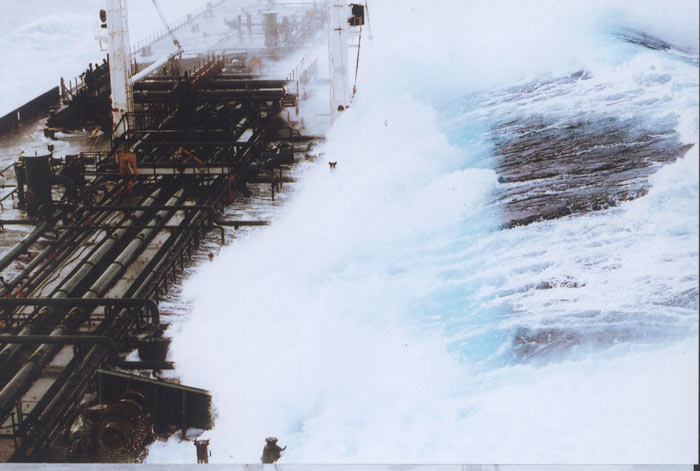Did a Rogue Wave Kill 4 Fishermen?

The U.S. Coast Guard announced on Sunday (April 21) that it was suspending the search for four fishermen whose boat is believed to have been destroyed by a rogue wave.
The 50-foot Nite Owl vessel was tied to an oil rig in the Gulf of Mexico about 115 miles (185 kilometers) southeast of Galveston, Texas, in rough weather on Friday morning (April 19), according to the Associated Press.
But in the early morning darkness, "a rogue wave, a freak wave or something hit the side of the boat," John Reynolds, the sole survivor of the accident, told the AP.
The wave "tore the wheel house and canopy off the boat," Larry Moore, owner of the commercial fishing vessel, told the Beaumont Enterprise from his home in Golden Meadow, La. "Everyone was asleep when it happened." The shattered craft sank within two minutes." [Shipwrecks Gallery: Secrets of the Deep]
Rogue waves, sometimes called "freak waves," are extremely large waves that occur far out at sea in apparent isolation and without any obvious cause. The waves can easily reach 100 feet (30 meters) or more in height.
Though researchers have yet to understand how rogue waves develop, some scientists claim atmospheric pressure may play a role. Other research suggests rogue waves could result from the clash of two interacting wave systems traveling perpendicular to each other.
After a possible rogue wave destroyed the Nite Owl, all five men aboard were thrown into the choppy water without life jackets.
Sign up for the Live Science daily newsletter now
Get the world’s most fascinating discoveries delivered straight to your inbox.
Though Reynolds tried to help the other men into the life raft he found, his efforts were thwarted by the rough sea's 12-foot (3.7 m) waves and his crewmates' poor swimming ability, he said.
"I got in the raft. I heard them call out. There was a little ring inside there with a 60-foot line on it," Reynolds told the AP. "I threw it in the direction I heard [a crewmate] hollering from, hoping he could grab ahold of it and pull himself to the life raft. Apparently, he couldn't get ahold of it."
Reynolds, 56, was rescued by the Coast Guard later that morning after firing flares into the air. Though he has worked as a commercial fisherman for 35 years, Reynolds told the Beaumont Enterprise that this was the first time he had ever ended up in the water.
Follow Marc Lallanilla on Twitter and Google+. Follow us @livescience, Facebook & Google+. Original article on LiveScience.com.










